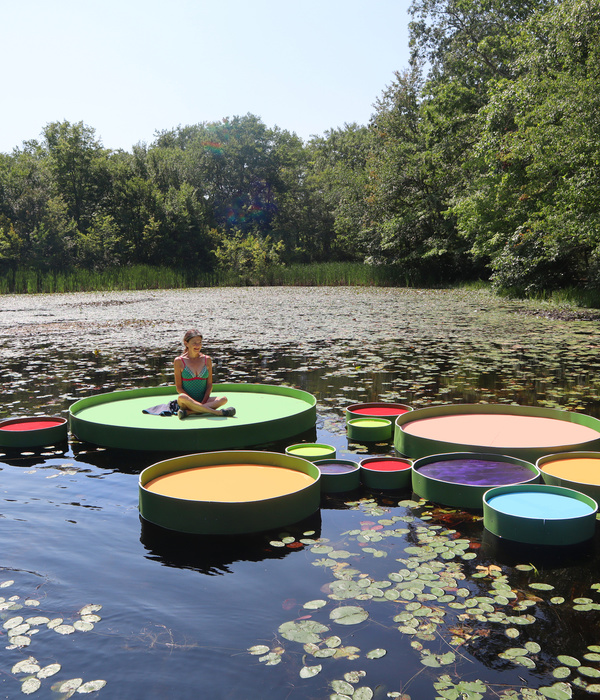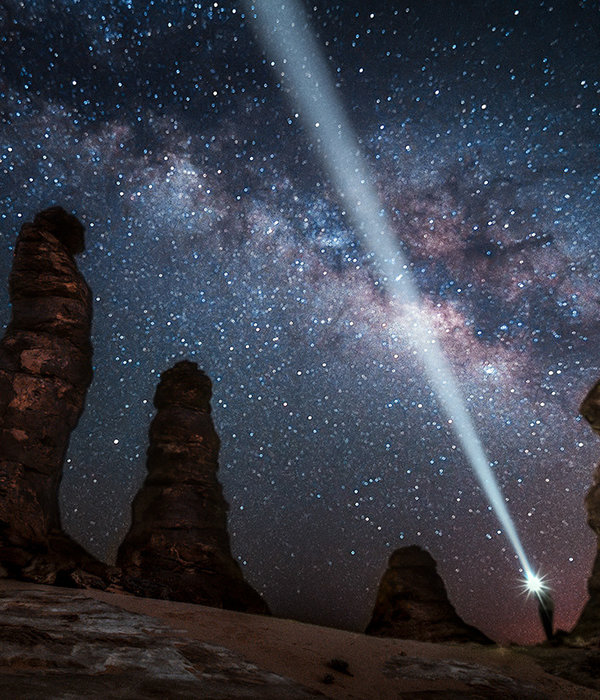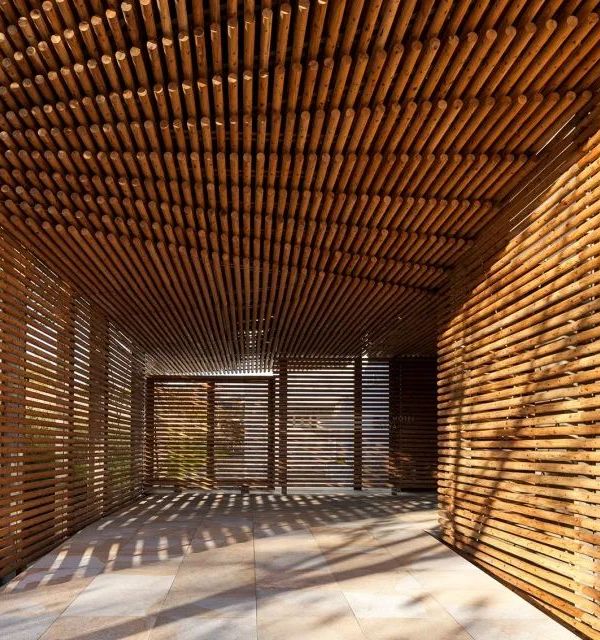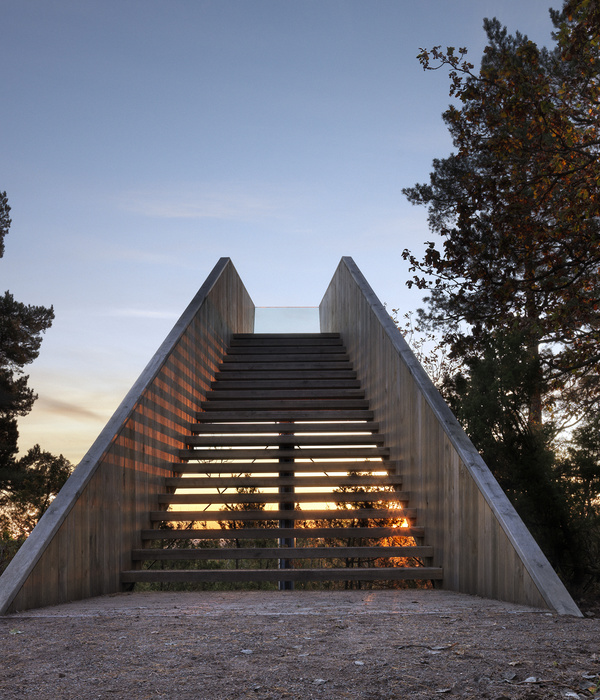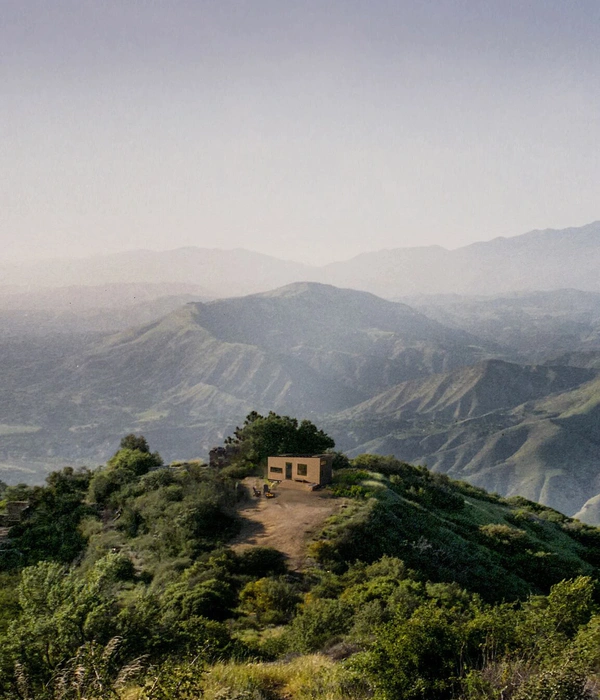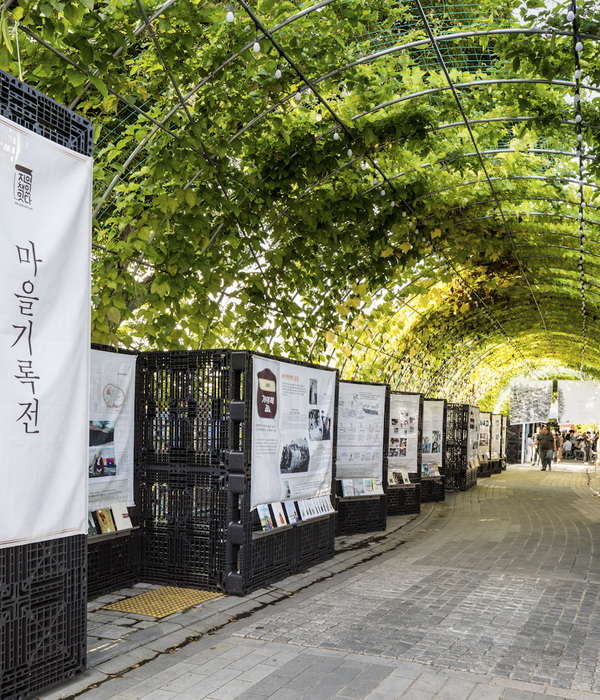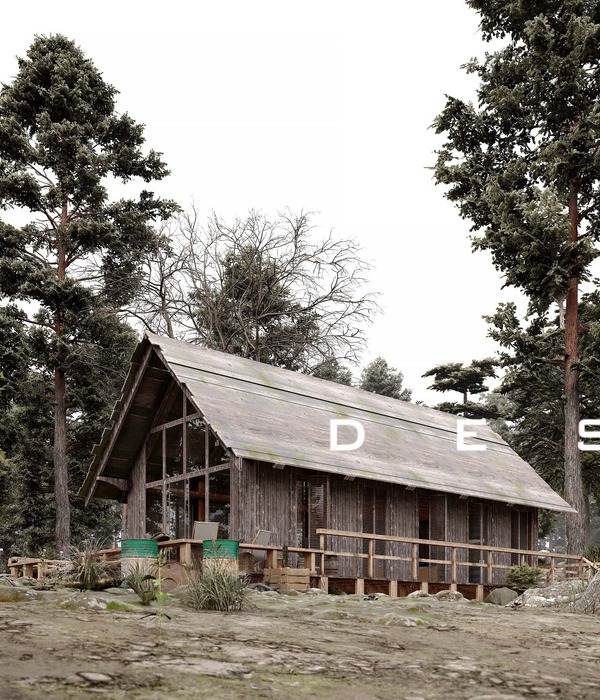彩色小径的设计灵感来源于自然界的固有次序。看上去有机的野花,从其精确的花瓣数量以及排列方式,到它们在草地上有组织的繁衍形式,都呈现出了一种有秩序的结构。颜色丰富的野花聚集形成一片片纯色的花丛,这是在德克萨斯丘陵地常见的景色,彩色小径模仿了这一场景,用单一颜色的外壳包裹内部交错的彩带。彩带分别为蓝色和红色,前者代表了德州的蓝色矢车菊,后者象征印第安火焰草,它们是约翰逊夫人最喜欢的两种花。半固态的结构依偎在景观环境中,进入装置的人可以在享受这种神秘的同时,体验物理上的互动。装置的两端都可进入,在这里,人们可以感受脚下有着轻微弹性的地面,捕捉遮阳带外稍纵即逝的景色,聆听他人走过的声音。
▼装置外观,external view of the installation ©Leonid Furmansky
▼有秩序的排列让装置呈现出调和的颜色,ordered arrangement showing a plain result ©Leonid Furmansky
▼阳光透过带子照亮装置,sunlight running into the installation through the straps ©Leonid Furmansky
The inspiration for Color Trail originates from the inherent order in nature. Though seemingly organic, wildflowers exhibit an ordered structure, from their precise petal number and pattern to their seemingly organized propagation across grassy fields. This is often the scene of the Texas Hill Country, where clusters of colorful wildflowers are found amid otherwise plain sceneries. Color Trail emulates this idea by having a monochromatic exterior shell that envelops highly contrasting planes that intersect each other. The intersecting planes are dyed blue and red after the Texas bluebonnet and the Texas Indian paintbrush, two of Lady Bird Johnson’s favorite flowers. We wanted participants to enjoy the mystery of seeing a semi-solid structure nestled into the landscape and feel compelled to experience a physical interaction. Participants could enter at either end, experiencing a slight bounce beneath their feet while catching fleeting views through sunlit straps and hearing others making their way through.
▼白色的外壳包裹蓝色和红色的带子,white shell enveloping red and blue straps ©Leonid Furmansky
▼蓝色和红色的条带交错,intersection of the red and blue straps ©Leonid Furmansky
▼装置与自然,the installation and the nature ©Leonid Furmansky
▼人与装置互动,interaction between people and the installation ©Leonid Furmansky
▼装置区位,location of the installation ©Faye + Walker Architecture
▼平面图,plan ©Faye + Walker Architecture
▼立面图,elevation ©Faye + Walker Architecture
▼剖面图,section ©Faye + Walker Architecture
Design: Faye + Walker Architecture Photograph Credit: Leonid Furmansky
{{item.text_origin}}

